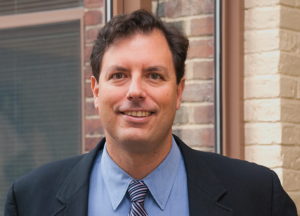Federal officials might pursue a regional approach or offer exemptions in finalizing a nursing home staff vaccination mandate, but it’s important they not water down the regulations so much as to undermine their goal, health policy expert David Grabowski, Ph.D., said Monday afternoon.
The Harvard Medical School professor said many of the nation’s skilled nursing providers, especially those in areas with low overall vaccination rates, may enter the mandate period at a disadvantage. He said the Centers for Medicare & Medicaid Services could consider a strategy that ties penalties to regional benchmarks, give providers incremental targets or otherwise try to limit massive staff losses.

“Is this going to be uniform or national?” Gabowski asked during a conference call with LeadingAge members. “Is there going to be any kind of adjustments or staggered requirements? I don’t have any insights, but my hope is yes. If you apply these uniform standards to that facility in California that has a really high rate with that facility in the southeast that has a really low rate, you’re going to put that facility in the southeast either out of business or severely compromise their ability to care for residents.”
CMS announced last week that it is working on regulations to be posted next month that will make staff COVID-19 vaccinations a requirement of its rules of participation. It is unclear when the new rules will go into effect, whether there will be a range of penalties up to and including removal from the Medicare and Medicaid programs, whether the mandate will apply to all staff, and what percentage of workers will need to be vaccinated to comply.
Nationally, staff vaccination rates at nursing homes stand at 60.5% per data reported the week of Aug. 8.
To push numbers higher but not cause mass staff departures, CMS could allow religious and medical exemptions like many providers have embedded in their own policies. In some states, a test-out exemption also has been offered as an alternative to being vaccinated, a move Grabowski cautioned against.
“I have really mixed feelings about the testing exemptions … We’ve tried testing and I’m not sure that’s been successful. It wouldn’t surprise me at all if there are some exemptions,” Grabowski said. “But you want to be really thoughtful or careful or about how you apply them. Do you leave kind of big, big gaps here? I hope that we don’t create this huge backdoor for a lot of our staff to ultimately not get vaccinated.”
While more liberal exemption might limit an exodus of workers, it also might not serve residents best, he said. He noted recently publicized efforts among workers in other industries to circumvent vaccination policies.
Grabowski said he remains a proponent of vaccine mandates, though he was disappointed the initial federal call only applies to skilled nursing.
“There was no reason to single out nursing homes,” he said. “Ultimately, I think there’s a belief this will have to be extended to other healthcare settings.”
He said a staggered approach creates “perverse incentives.” As other industries, including home care, also grapple with labor shortages, they will be able to headhunt among the vaccine hesitant willing to leave nursing homes. Eventually, though, those workers could find themselves under a broader vaccine mandate, and it will have been nursing homes that suffered the worst workforce interruptions in the meantime.
“There’s real risk of a big exit here,” Graboswki said, while noting the industry’s pre-pandemic labor struggles. “There’s a reason we’ve had these staffing shortfalls…. It comes back to pay and working conditions. The pay has been too low and the working conditions have been too challenging. I think we need to flip that script. And the way we do that is by putting more federal and state dollars into staffing…. We need this influx of investments.”




